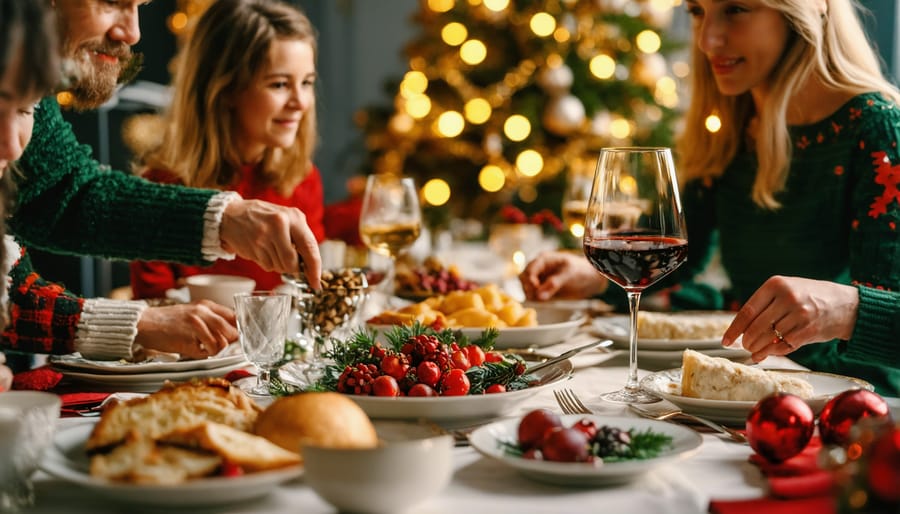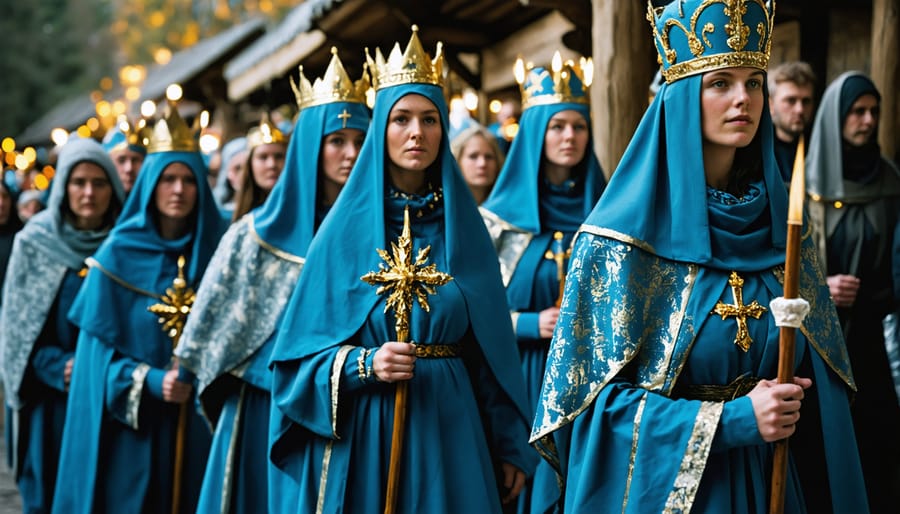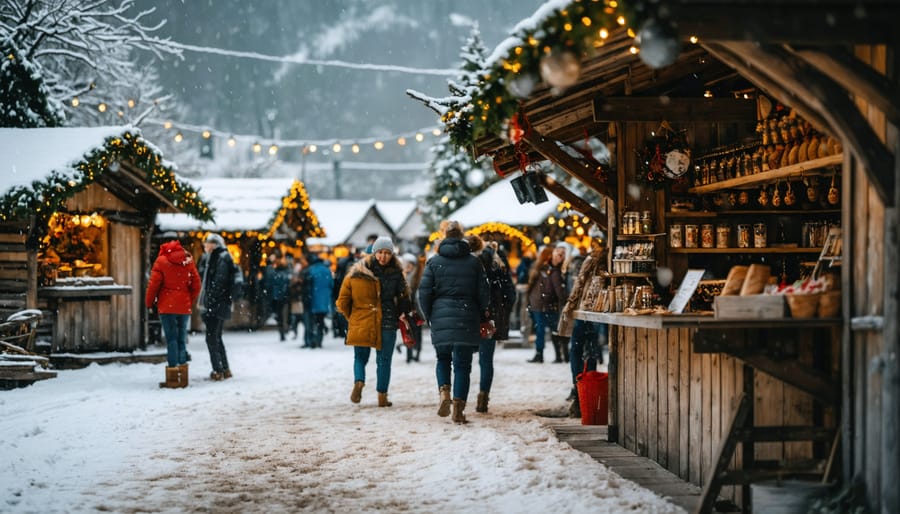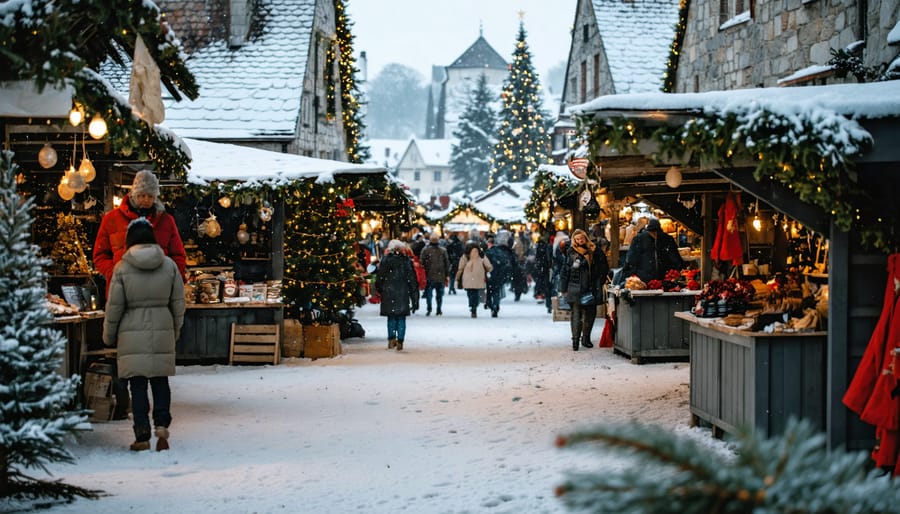Across Europe’s snow-dusted cities and cozy villages, Christmas illuminates the winter months with a tapestry of centuries-old traditions and modern festivities. From the twinkling Christmas markets of Germany to the midnight masses of Italy, and from Sweden’s celebration of St. Lucia to Britain’s Boxing Day customs, Europe doesn’t just celebrate Christmas—it embraces the season with unparalleled devotion and diversity. While Christian traditions form the foundation of these celebrations, Europe’s Christmas has evolved into a cultural phenomenon that transcends religious boundaries, welcoming people of all backgrounds to participate in its magic. Each region adds its own unique flourish to the holiday tapestry, creating a mesmerizing blend of customs that range from December 6th’s St. Nicholas Day to January 6th’s Epiphany celebrations. Whether it’s leaving shoes out for gifts in the Netherlands, enjoying a festive feast of seven fishes in Italy, or dancing around the Christmas tree in Denmark, Europe’s Christmas celebrations offer a rich mosaic of traditions that have inspired holiday customs worldwide.
The Heart of European Christmas Celebrations
Religious Traditions & Midnight Mass
The spiritual heart of European Christmas celebrations beats strongest on Christmas Eve, when church bells ring out across snow-dusted villages and cities alike. Midnight Mass remains a cherished tradition, drawing families to beautifully decorated churches illuminated by countless candles. In Catholic countries like Spain, Italy, and Poland, these services are particularly meaningful, with congregations gathering to sing ancient carols and celebrate the nativity.
Many European cathedrals host special Christmas concerts featuring traditional choirs and orchestras performing beloved seasonal music. In Germany, the haunting melodies of “Stille Nacht” (Silent Night) echo through centuries-old churches, while in France, the “Messe de Minuit” creates an atmosphere of reverent joy. Orthodox Christians in Eastern Europe celebrate according to the Julian calendar, with magnificent services featuring Byzantine chants and intricate rituals.
These religious observances connect modern Europeans to centuries of tradition, offering a peaceful counterpoint to the season’s festivities and reminding celebrants of Christmas’s spiritual foundations.
Family Gatherings & Feast Days
European family holiday celebrations center around cherished gatherings that span multiple days. Christmas Eve often marks the beginning of festivities, with extended families coming together for elaborate dinners featuring traditional dishes passed down through generations. In many European households, December 24th is the main celebration day, where families exchange gifts and share a feast that might include roasted goose, carp, or turkey, depending on the region.
The celebration continues through Christmas Day, with long, leisurely lunches that stretch into the evening. Grandparents tell stories of Christmases past while children play with new toys, and the aroma of freshly baked treats fills the air. In countries like Germany and Austria, families often gather for multiple feast days, including St. Nicholas Day on December 6th and the Feast of the Epiphany on January 6th, extending the magical season of togetherness and celebration well beyond December 25th.

Regional Christmas Enchantment
Northern European Wonder
In the enchanting Nordic regions, Christmas celebrations take on a particularly magical quality, blending ancient customs with cherished modern traditions. The celebration of Santa Lucia on December 13th illuminates the dark winter days, as young girls dressed in white robes with red sashes and crown-like wreaths of candles process through homes and churches, singing traditional songs and serving saffron buns.
The Jul celebrations, deeply rooted in Swedish holiday traditions, bring families together around flickering candlelight and festive feasts. The julbord (Christmas table) groans under the weight of traditional delicacies like pickled herring, meatballs, and rice pudding with an almond hidden inside – finding it promises marriage within the year!
In Norway and Finland, the season sparkles with similar warmth and wonder. Children eagerly await the Joulupukki (Finnish Santa) or Julenissen (Norwegian Christmas gnome), while homes are decorated with straw julbocks (Christmas goats) and paper stars that glow in windows, creating a cozy atmosphere during the long winter nights. These Northern European celebrations perfectly capture the magic and mystery of the Christmas season.

Central European Magic
The heart of Central European Christmas magic beats strongest in Germany, Austria, and Switzerland, where centuries-old traditions transform cities into winter wonderlands. Enchanting Christmas markets (Christkindlmarkts) fill medieval town squares with the aroma of mulled wine, roasted chestnuts, and freshly baked lebkuchen. These magical marketplaces, dating back to the Middle Ages, feature wooden stalls adorned with twinkling lights and handcrafted ornaments.
December brings special significance through Advent customs, with families gathering around elaborate advent wreaths each Sunday to light candles and share stories. Children eagerly await the arrival of Christkind, a angelic figure who delivers gifts, while homes fill with the sweet scent of Christmas cookies and stollen being baked according to cherished family recipes.
Swiss traditions add their own alpine charm, with bell-ringing processions and elaborate nativity scenes dotting mountain villages. In Austria, the ethereal sounds of “Silent Night” echo through churches, paying homage to the beloved carol’s origins in the small town of Oberndorf. These heartwarming customs create an atmosphere that truly embodies the spirit of Christmas, bringing warmth to the cold winter nights.

Mediterranean Merriment
Along the sun-kissed shores of the Mediterranean, Christmas takes on a distinctly warm and vibrant character. In Italy, the celebration centers around the beloved Feast of the Seven Fishes on Christmas Eve, where families gather to share an elaborate seafood dinner. The tradition of setting up elaborate nativity scenes, known as presepi, brings magic to Italian town squares and homes alike.
Spanish families embrace the festive season with midnight Mass called Misa del Gallo, followed by a lavish family feast. Children eagerly await January 6th, when the Three Kings parade through streets distributing gifts. The sweet aroma of turrón (nougat) and polvorones (shortbread) fills Spanish homes throughout the season.
In Greece, Christmas boats adorned with lights twinkle alongside traditional trees, especially in coastal areas. Carol singers called kalanda go door-to-door on Christmas Eve, carrying model boats and triangles. The celebration extends to January 6th with the Blessing of the Waters, where brave swimmers dive to retrieve a cross thrown into the sea by a priest, bringing good fortune for the coming year.
Eastern European Charm
In Eastern Europe, Christmas traditions sparkle with a unique blend of ancient customs and heartwarming rituals. In Poland, families eagerly await Wigilia, the Christmas Eve feast that begins when the first star appears in the sky. The table is set with an extra place for unexpected guests, and twelve meatless dishes represent the twelve apostles. Children search the sky for that first glimmering star while the sweet aroma of pierogi and borscht fills the air.
Czech celebrations bring their own magical touch, with the tradition of fortune-telling during Christmas Eve dinner. Young women throw shoes over their shoulders – if the toe points towards the door, marriage is said to be coming soon! The scent of vánoční cukroví (Christmas cookies) wafts through homes, while little ones place boots on windowsills, hoping St. Nicholas will fill them with treats.
Throughout the region, carolers bundle up in warm coats to sing traditional songs, their voices carrying through snow-covered streets. Houses are adorned with handmade decorations, and the spirit of giving flourishes in thoughtful customs like sharing oplatki, blessed Christmas wafers that symbolize unity and forgiveness.
Modern European Christmas Spirit
Preserving Heritage
Across Europe, families and communities maintain a delicate balance between cherishing age-old Christmas customs and embracing contemporary celebrations. Many households still practice traditional rituals like hand-making advent wreaths, singing carols in their native languages, and preparing recipes passed down through generations. In Germany, families gather to make their own Christstollen bread, while Italian grandmothers teach younger generations the art of crafting homemade panettone.
The preservation of heritage extends beyond homes into public spaces, where historic Christmas markets continue to thrive alongside modern festivities. Cities like Strasbourg, Vienna, and Prague maintain their centuries-old market traditions while incorporating new elements that appeal to younger generations. Churches still hold midnight mass by candlelight, and many communities preserve customs like St. Nicholas Day celebrations and the lighting of advent candles.
This harmonious blend of old and new ensures that Europe’s rich Christmas heritage remains vibrant and meaningful for future generations while adapting to contemporary life.
New Traditions
While traditional European Christmas celebrations remain cherished, new customs are emerging across the continent, blending modern lifestyles with festive spirit. In recent years, Christmas markets have expanded beyond Germany to become popular attractions throughout Europe, with many cities adding unique local twists. Sustainable celebrations are gaining momentum, with eco-friendly decorations and zero-waste gift-wrapping becoming holiday priorities.
Digital advent calendars and virtual Christmas card exchanges have found their place alongside traditional customs, especially among younger generations. Many European families now embrace international traditions, incorporating American-style cookie decorating or Japanese KFC Christmas dinners into their celebrations.
Community-focused events are also evolving, with neighborhoods organizing collective light displays and shared festivities. Pop-up winter villages, ice skating discos, and food truck festivals have become seasonal highlights in many European cities, creating new memories for future generations while honoring the spirit of traditional Christmas gatherings.
From the snow-dusted streets of Stockholm to the sun-warmed plazas of Madrid, Europe’s Christmas celebrations paint a vibrant tapestry of traditions that have enchanted generations. Each country adds its own magical touch to the season, creating a festive mosaic that makes European Christmas truly special. Whether it’s the ethereal glow of candlelit processions in Austria, the joyful sounds of carol singers in England, or the mouthwatering aromas of fresh-baked treats wafting through German Christmas markets, these celebrations capture the very essence of holiday magic. The beauty of European Christmas lies in its wonderful diversity – a harmonious blend of ancient customs and modern interpretations, religious observances and secular festivities, all coming together to create unforgettable holiday memories. As families gather around tables laden with traditional feasts, and children eagerly await their unique gift-bringers – from Santa Claus to the Three Kings – the spirit of Christmas brings warmth and joy to every corner of this culturally rich continent.










